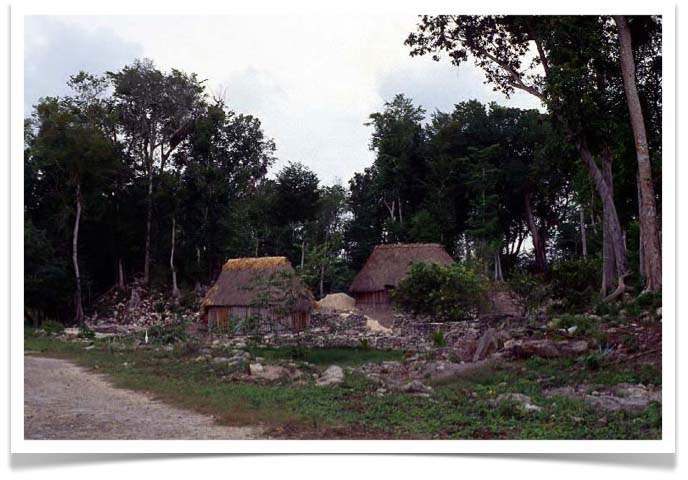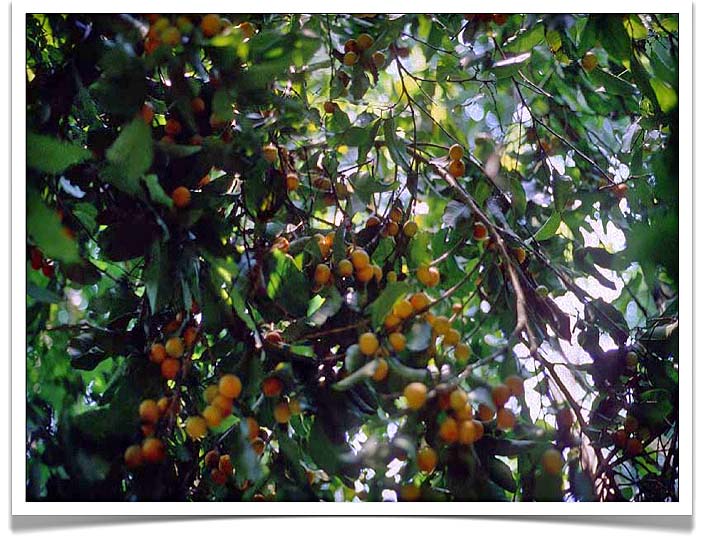The Curious Case of Brosimum alicastrum
 Tuesday, October 21, 2008 at 9:49AM
Tuesday, October 21, 2008 at 9:49AM  Brosimum alicastrum trees growing on the ruins of Coba in Quintana Roo.
Brosimum alicastrum trees growing on the ruins of Coba in Quintana Roo.

Brosimum alicastrum trees growing in the home garden of a present-day Mayan family in Quintana Roo.

Fruiting branch of Brosimum alicastrum. A red-fruited variety of the species is also common.
Many Mayan ruin complexes were discovered by chicleros looking for forage to feed their mules after a hard day of tapping latex. The preferred forage was the leaves and twigs of Brosimum alicastrum Sw. (Moraceae), a common rain forest tree known locally as "ramon" (from the Spanish verb ramonear, i.e. to browse). The chicleros would encounter a dense stand of ramon, start cutting the branches, and eventually notice that the trees were growing on the finely-worked stones and carvings of a Mayan temple.
The relationship between Brosimum alicastrum and Mayan ruins becomes even more interesting given the utility of the tree. The leaves are used for forage, the fruits and seeds are edible, the milky white latex is potable, and the wood is durable, yet easily-worked. The dried, ground seeds contain more protein than corn. Ramon seeds are currently eaten as survival food by rural communities in Quintana Roo, and there is much archaeological literature that suggests that the seeds were a dietary staple for the Maya in pre-Columbian times. The logical conclusion drawn by many investigators is that the dense aggregations of Brosimum alicastrum found near ruins are, in essence, relict Mayan orchards.
I spent five years studing the ecology of Brosimum alicastrum for my doctoral dissertation. I have a different theory of why these trees grow on Mayan ruins. [NOTE: The fruits shown in the Wikipedia link are not Brosimum alicastrum. Not even close.]


Reader Comments (2)
please contact me, i work with Brosimum for the past 17 years all over Central America, Mexico and Caribbean, heading to Peru in March to work there too! would love to exchange info
And you and I have chatted ocasionally about B. Alicastrum over these years. Hi, Erika...